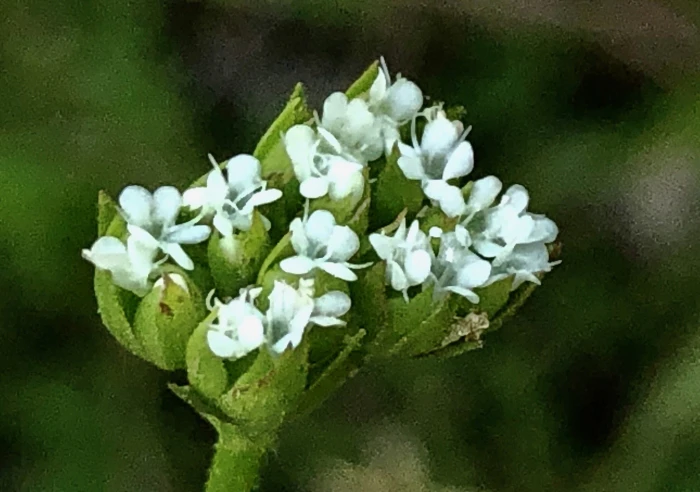Beaked Cornsalad
(Valerianella radiata)
Beaked Cornsalad (Valerianella radiata)
/
/

© Bill Sheehan
CC BY-SA 4.0
Image By:
© Bill Sheehan
Recorded By:
Copyright:
CC BY-SA 4.0
Copyright Notice:
Photo by: © Bill Sheehan | License Type: CC BY-SA 4.0 | License URL: http://creativecommons.org/licenses/by-sa/4.0/ | Uploader: bill_sheehan | Publisher: iNaturalist |

























Estimated Native Range
Climate Requirements for Knoxville, Tennessee
| This Plant | Your Site | Plant Suitability for Your Location | ||
|---|---|---|---|---|
| • Precipitation | 24" - 78" | 47" | Aquatic | Aquatic |
| • High Temp. | 79°F - 98°F | 89°F | Your summer temperatures are normal for this plant. | Excellent |
| • Low Temp. | 14°F - 48°F | 27°F | Your winter temperatures are normal for this plant | Excellent |
This plant should grow well at your location with about N inches per year (Y minutes per month) of irrigation.
Summary
Valerianella radiata, commonly known as Beaked Cornsalad, is an annual herb that is native to a variety of habitats including deciduous forests, forest edges, and disturbed areas such as creek banks, roadsides, and pastures across the Eastern United States. It typically grows up to 2 feet tall and features hollow, dichotomously branching stems. The leaves are simple, toothed, and arranged oppositely along the stem. From April to May, Beaked Cornsalad produces small, inconspicuous white flowers that give way to yellowish, glabrous fruit. The plant is self-fertile and exhibits a moderate growth rate.
Beaked Cornsalad is valued for its ability to thrive in a range of light conditions, from full shade to full sun, making it versatile for garden use. It is often found in wildflower mixes and can be used to naturalize areas or as a filler in garden beds. The plant prefers well-drained soils and requires minimal maintenance once established. While it is not typically cultivated for ornamental purposes, it can contribute to biodiversity in a garden setting. In some regions, it is considered a weed due to its self-sowing nature. Beaked Cornsalad is listed as a special concern in Connecticut, endangered in New Jersey, and considered a weed in parts of the U.S. Gardeners should be aware of its potential to self-seed and spread, which can be managed by deadheading before the seeds mature.CC BY-SA 4.0
Beaked Cornsalad is valued for its ability to thrive in a range of light conditions, from full shade to full sun, making it versatile for garden use. It is often found in wildflower mixes and can be used to naturalize areas or as a filler in garden beds. The plant prefers well-drained soils and requires minimal maintenance once established. While it is not typically cultivated for ornamental purposes, it can contribute to biodiversity in a garden setting. In some regions, it is considered a weed due to its self-sowing nature. Beaked Cornsalad is listed as a special concern in Connecticut, endangered in New Jersey, and considered a weed in parts of the U.S. Gardeners should be aware of its potential to self-seed and spread, which can be managed by deadheading before the seeds mature.CC BY-SA 4.0
Plant Description
- Plant Type:
- Height: 0.5-1.5 feet
- Width: 0.5-1 feet
- Growth Rate: Moderate
- Flower Color: White
- Flowering Season: Spring
- Leaf Retention:
Growth Requirements
- Sun: Full Sun, Part Shade
- Water: Medium
- Drainage: Medium
Common Uses
Bee Garden, Border Plant, Butterfly Garden, Low Maintenance
Natural Habitat
Deciduous forests, forest edges, and disturbed areas such as creek banks, roadsides, and pastures
Other Names
Common Names: Blue-Eyed Mary , Beaked Valerian
Scientific Names: Valerianella radiata , Fedia radiata , Fedia woodsiana , Valeriana locusta var. radiata , Valeriana radiata , Valeriana valerianella , Valeriana woodsiana , Valerianella radiata f. demareei , Valerianella radiata f. fernaldii , Valerianella radiata f. parviflora
GBIF Accepted Name: Valerianella radiata